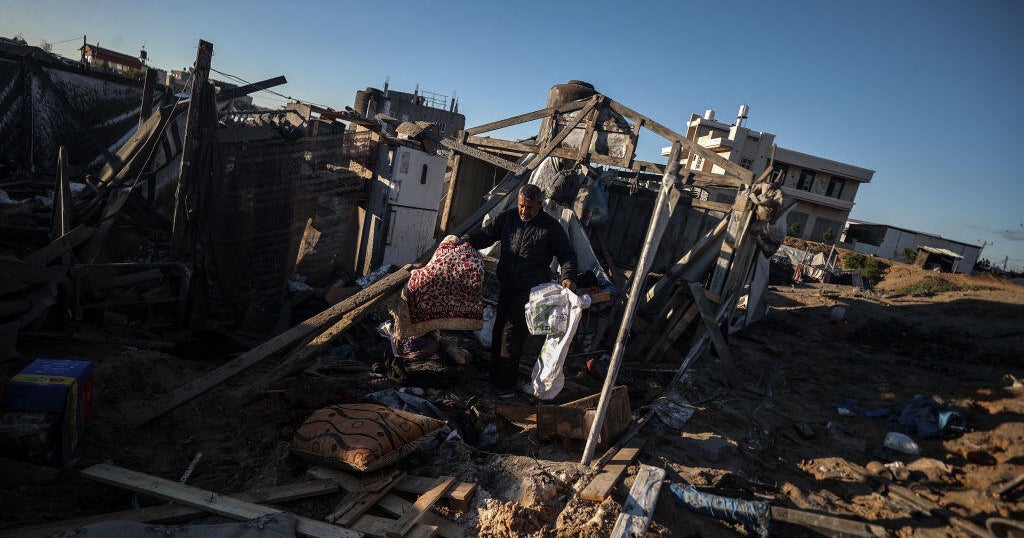Gaza’s Grim Toll: Understanding the 50,000 Lives Lost as Conflict Escalates
As the conflict in Gaza escalates, a staggering report from the health ministry reveals a grim toll of 50,000 lives lost. This harrowing statistic underscores the urgent humanitarian crisis unfolding in the region, raising critical questions about the future of Gaza and its people. With Israel intensifying airstrikes and evacuations, the ramifications of this conflict extend far beyond the immediate violence, impacting generations to come.
The Human Cost of Conflict
The sheer scale of the casualties in Gaza paints a disturbing picture of the ongoing conflict. The health ministry’s announcement of 50,000 fatalities reflects not only the immediate loss of life but also the profound psychological and social impacts on survivors. Families are fractured, communities devastated, and a sense of normalcy is increasingly elusive.
Among the casualties, a significant percentage are civilians, including women and children. This raises pressing ethical questions about the conduct of warfare and the obligations of states engaged in armed conflict. International humanitarian law stipulates the protection of non-combatants, highlighting the necessity for all parties to adhere to principles that prioritize civilian lives.
Escalation of Airstrikes and Ground Operations
The escalation of Israeli airstrikes has been marked by an intensity that has caught global attention. According to military sources, these operations are aimed at dismantling militant infrastructure; however, the collateral damage has been catastrophic. As airstrikes continue unabated, the civilian population bears the brunt of this military strategy.
- Destruction of Infrastructure: Essential services such as hospitals, schools, and water supply systems have been severely impacted, exacerbating the humanitarian crisis.
- Displacement: The ongoing conflict has led to mass evacuations, with hundreds of thousands of people fleeing their homes in search of safety.
- Access to Healthcare: Medical facilities are overwhelmed, and the loss of life due to treatable injuries is on the rise due to shortages of supplies and medical staff.
Humanitarian Crisis Deepens
The humanitarian situation in Gaza is dire. Reports indicate that basic necessities such as food, water, and medical supplies are running low. Aid organizations struggle to provide relief amid the chaos, facing numerous challenges, including restricted access to affected areas.
The United Nations and various NGOs have called for a ceasefire, emphasizing the need for humanitarian corridors to deliver aid and allow for civilian evacuations. The international community watches closely, with many advocating for diplomatic solutions to end the violence and address the root causes of the conflict.
International Response and Solidarity
The international response to the conflict has been mixed, with various nations and organizations voicing their concerns. There is a growing call for accountability regarding the disproportionate impact of military actions on civilians in Gaza. Protests and demonstrations have erupted worldwide, highlighting the widespread public interest in advocating for peace and justice in the region.
Countries are urged to play a constructive role in mediating the conflict, promoting dialogue and reconciliation between the parties involved. Humanitarian assistance is essential, but so is a long-term strategy to address the underlying issues that fuel the cycle of violence.
Looking Ahead: Hope Amidst Despair
Despite the grim toll of 50,000 lives lost, there remains a glimmer of hope for peace in Gaza. Grassroots organizations and local leaders are working tirelessly to foster dialogue and rebuild communities. Initiatives promoting education, healthcare, and economic development could lay the groundwork for a brighter future.
Engaging with the youth of Gaza is particularly crucial. Empowering the next generation with education and opportunities can help break the cycles of violence and despair. Programs that focus on conflict resolution and peacebuilding can inspire a new narrative, one that prioritizes coexistence and mutual respect.
The Role of Media and Information
In times of conflict, the role of media becomes increasingly significant. Accurate reporting can shed light on the humanitarian crisis, ensuring that the plight of those affected is not forgotten. Social media platforms have also played a crucial role in amplifying voices from Gaza, allowing for real-time updates and personal stories that humanize the statistics.
However, it is essential to discern between misinformation and credible reports. Journalistic integrity must be upheld to ensure that narratives surrounding the conflict reflect the complexities at play without perpetuating stereotypes or biases.
Conclusion: A Call for Collective Action
The loss of 50,000 lives in Gaza is a heartbreaking reminder of the urgent need for peace and resolution. As the humanitarian crisis deepens, the international community must come together to advocate for the protection of civilians and support efforts for sustainable peace. It is imperative that we listen to the voices of those affected by the conflict and work collectively towards a future where the toll of war is no longer counted in lives lost, but in lives saved and rebuilt.
In these challenging times, fostering empathy, solidarity, and understanding can pave the way for a brighter tomorrow for Gaza and its people. The journey towards peace may be long and arduous, but it is a path worth pursuing for the sake of humanity.
See more CNN Headline


